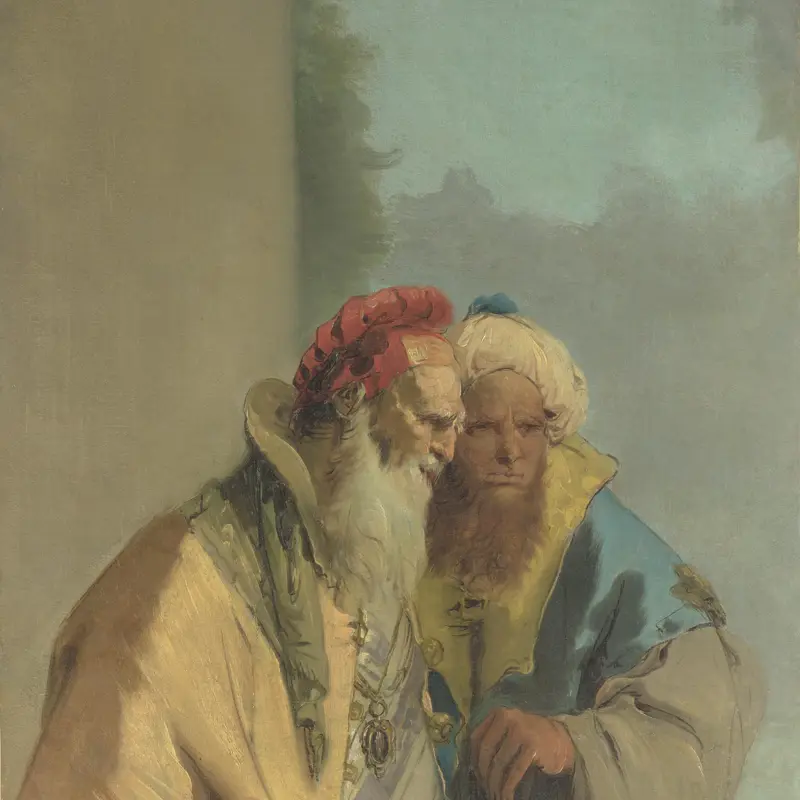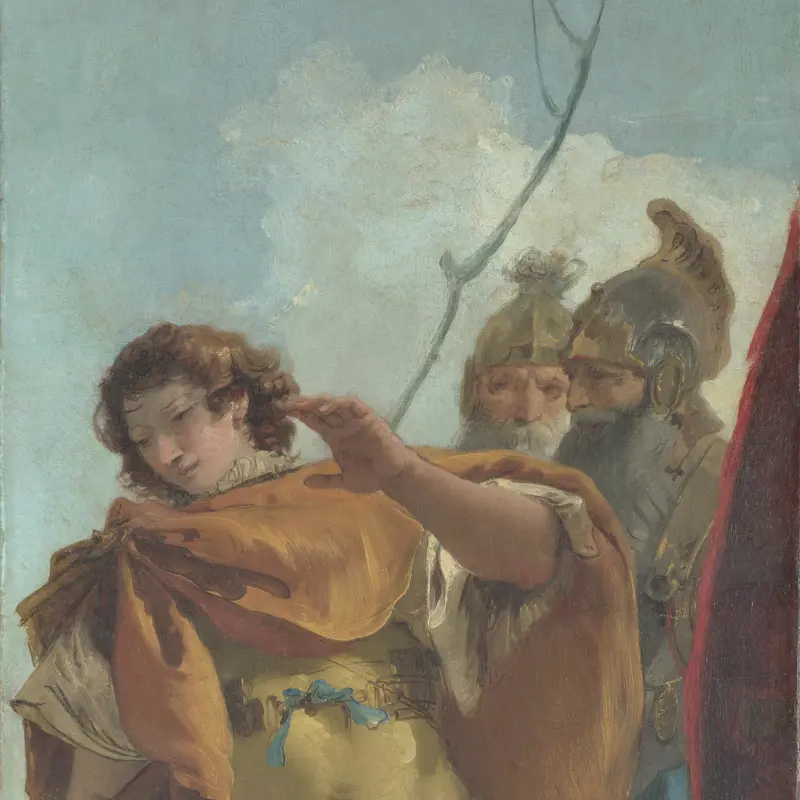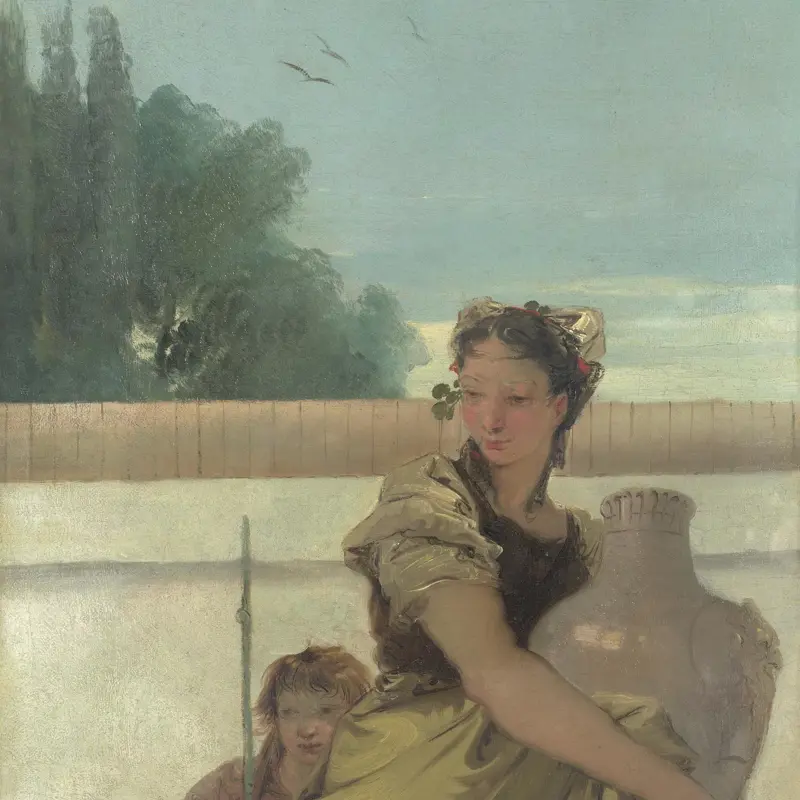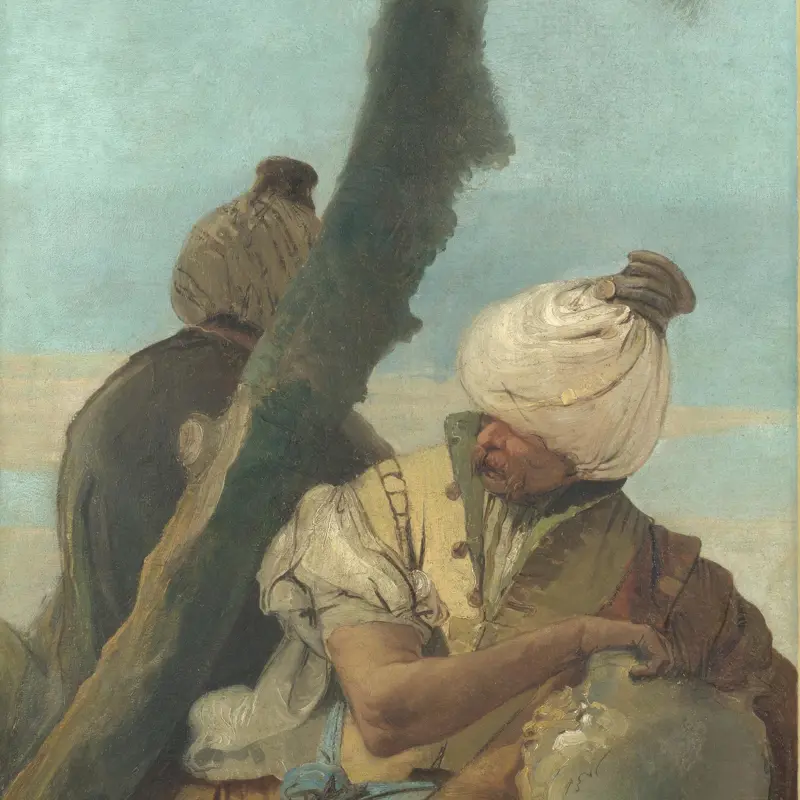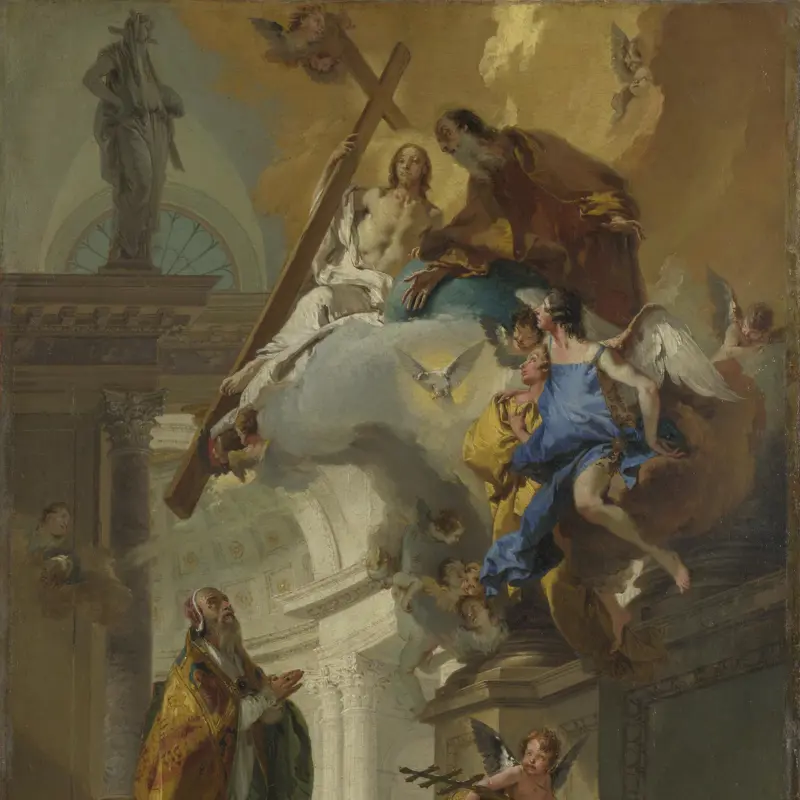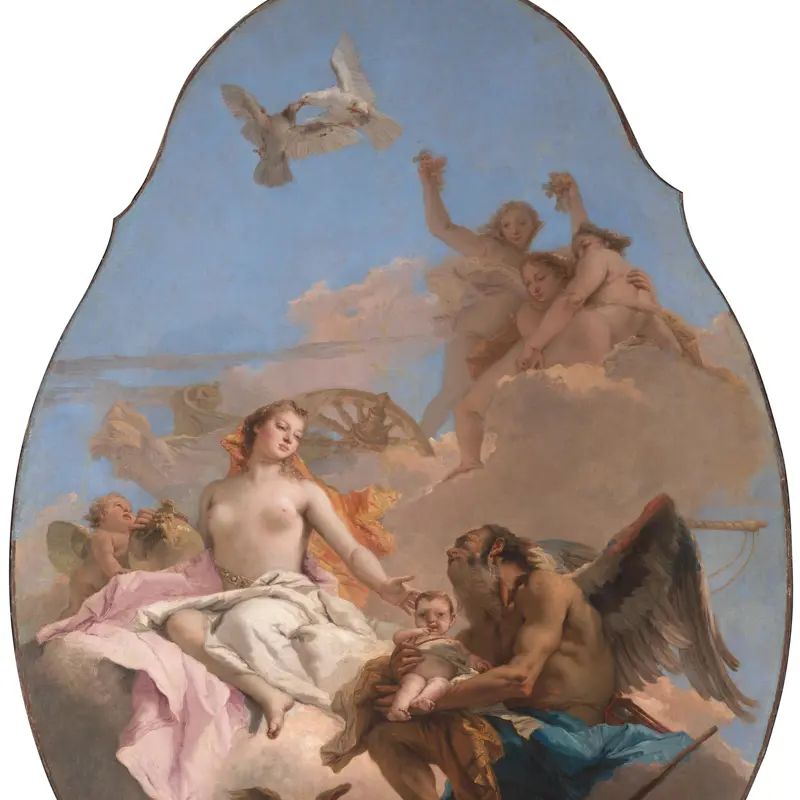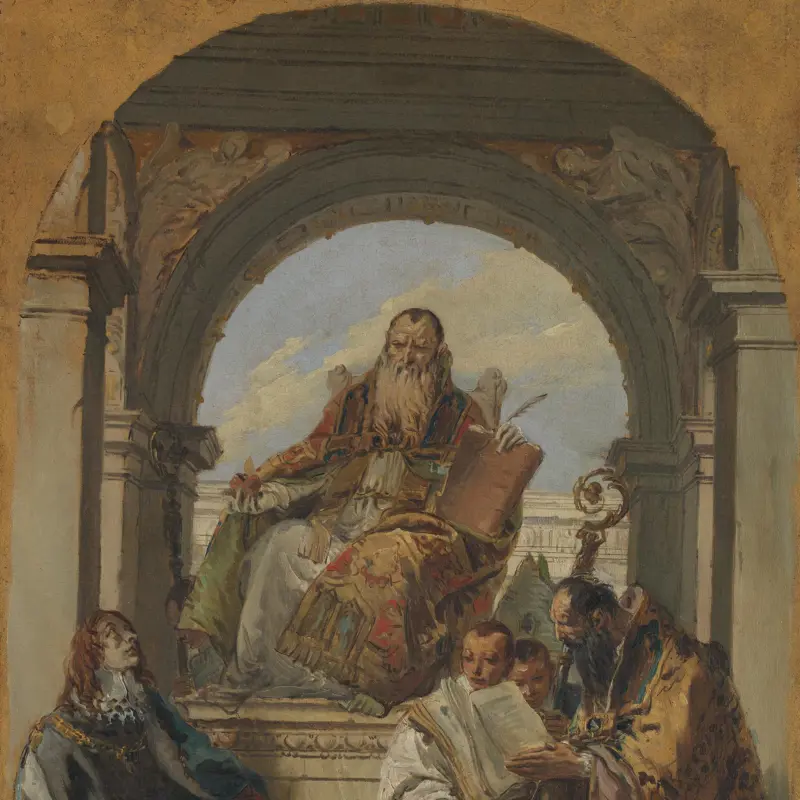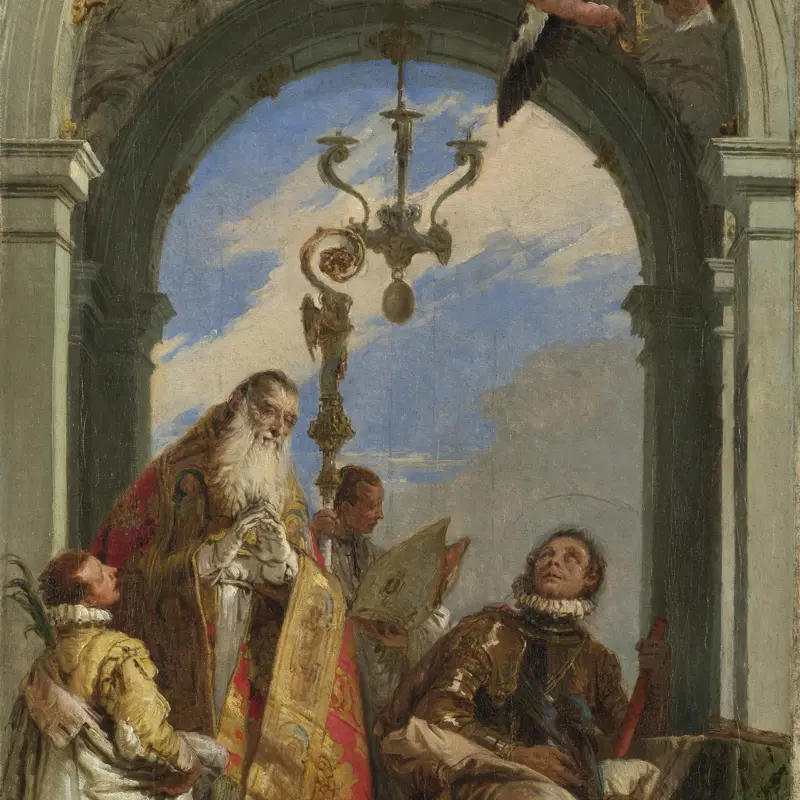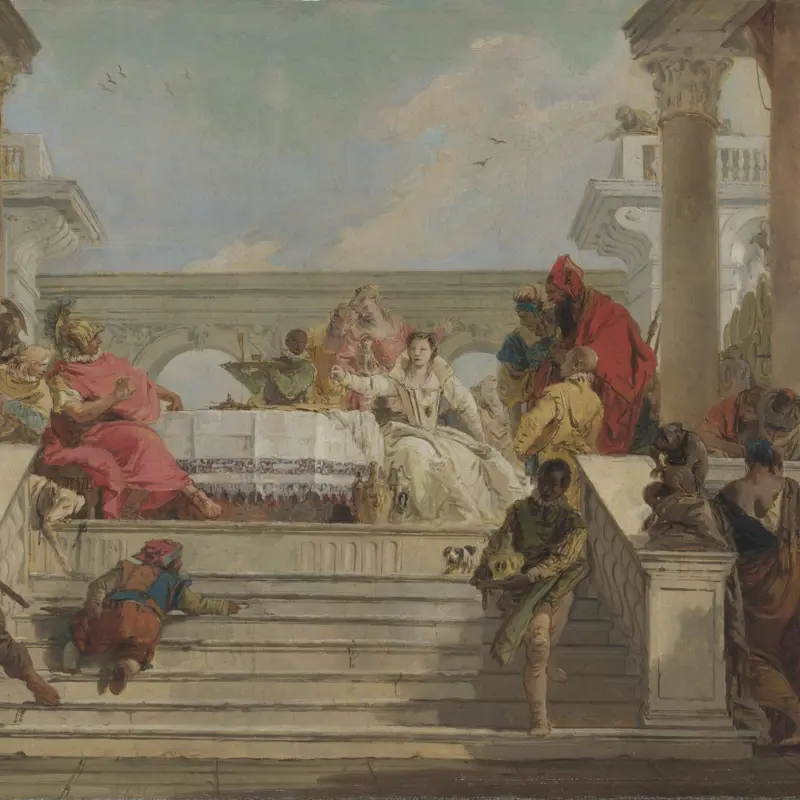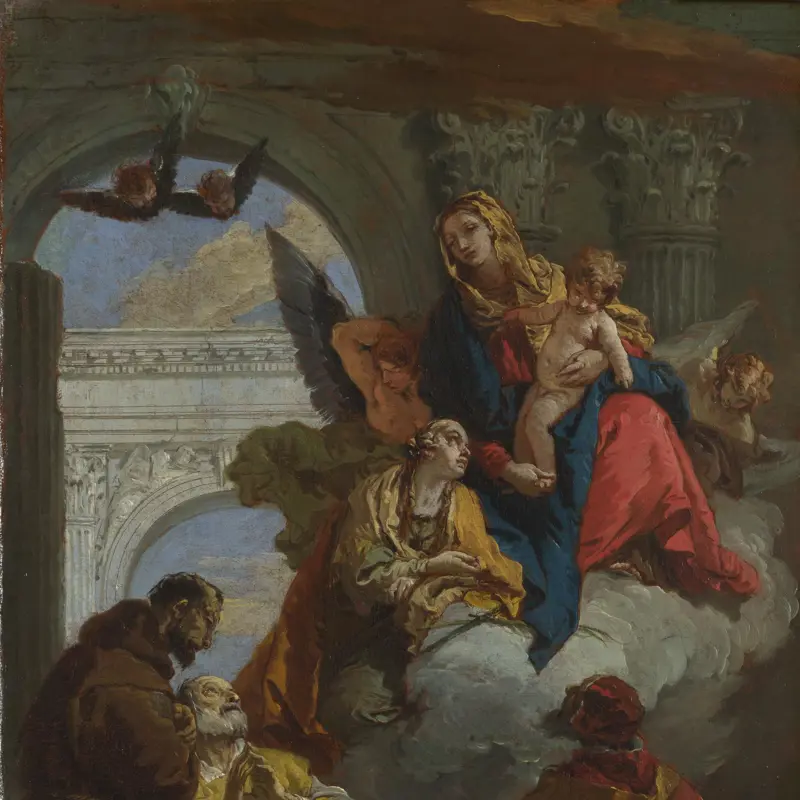Giovanni Battista Tiepolo, 'Two Standing Figures', about 1740-6
About the work
Overview
Two men, wearing robes and headdresses of luxurious fabrics, stand huddled together. Giovanni Battista Tiepolo’s lively outlines and visible brushstrokes emphasise the long, showy sleeves and folds of their clothing. Hints of primary colours appear against more sombre tones, while the brilliant sunlight and subtle shade pick out the men’s expressive faces and textured beards. Tiepolo was immensely skilled at drawing faces, which is particularly noticeable here in the weathered complexion of the aged man closest to us.
This is one of four paintings that once decorated a room in the Palazzo Cornaro on the Campo San Polo, Venice. The figures are inspired by Torquato Tasso’s Jerusalem Delivered, a popular sixteenth-century poem that tells of the ill-fated love between a Christian knight (Rinaldo) and a Saracen sorceress (Armida). The characterful old man with a fluffy white beard is probably the magician of Ascalon who, after showing Rinaldo heroic images of warfare in a shield, lures him back to fight. The shield lying at the man’s feet reappears in another painting from the same series, Rinaldo turning in Shame from the Magic Shield.
Key facts
Details
- Full title
- Two Standing Figures
- Artist
- Giovanni Battista Tiepolo
- Artist dates
- 1696 - 1770
- Part of the series
- Four Decorative Scenes
- Date made
- about 1740-6
- Medium and support
- oil on canvas
- Dimensions
- 159.1 × 53.3 cm
- Acquisition credit
- Bought, 1960
- Inventory number
- NG6302
- Location
- Not on display
- Collection
- Main Collection
- Previous owners
Provenance
Additional information
This painting is included in a list of works with incomplete provenance from 1933–1945; for more information see Whereabouts of paintings 1933–1945.
Text extracted from the ‘Provenance’ section of the catalogue entry in Michael Levey, ‘National Gallery Catalogues: The Seventeenth and Eighteenth Century Italian Schools’, London 1986; for further information, see the full catalogue entry.
Bibliography
-
1962The National Gallery, The National Gallery: January 1960 - May 1962, London 1962
-
1986Levey, Michael, National Gallery Catalogues: The Seventeenth and Eighteenth Century Italian Schools, London 1986
-
2001
C. Baker and T. Henry, The National Gallery: Complete Illustrated Catalogue, London 2001
About this record
If you know more about this work or have spotted an error, please contact us. Please note that exhibition histories are listed from 2009 onwards. Bibliographies may not be complete; more comprehensive information is available in the National Gallery Library.
Images
About the series: Four Decorative Scenes
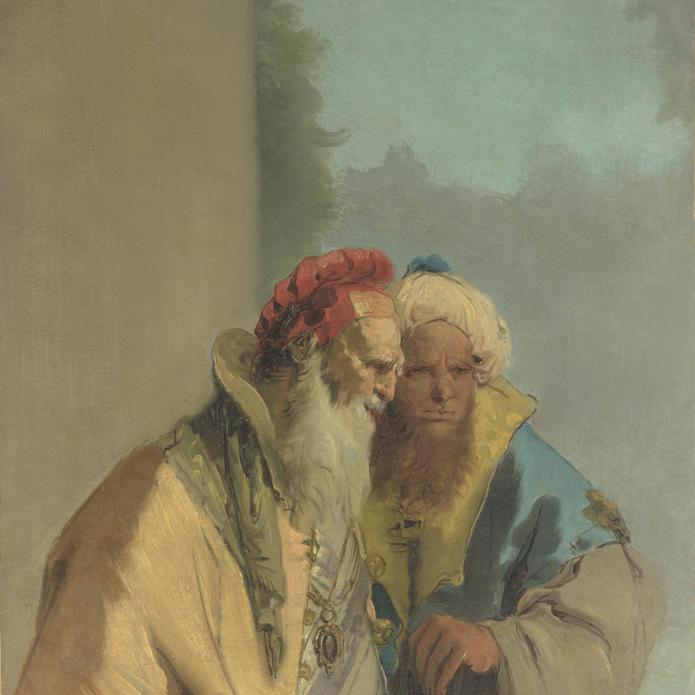
Overview
These four narrow canvases were painted during the 1740s by Giovanni Battista Tiepolo to decorate a room on the second floor of the Palazzo Cornaro on the Campo San Polo, Venice. Tiepolo was enjoying growing fame across Italy at this time; receiving important commissions for large ceiling paintings and wall decorations.
The paintings formed part of a complex decorative scheme, with which a ceiling painting (now in Canberra) and four allegorical figures (now divided between New York and Amsterdam), have been associated. Tiepolo’s four paintings in the National Gallery – Rinaldo turning in Shame from the Magic Shield, Seated Man, Woman with Jar and Boy, Two Standing Figures and Two Men seated under a Tree – are inspired by Torquato Tasso’s popular sixteenth-century poem Jerusalem Delivered. Set during the First Crusade, a Christian military campaign to recapture Jerusalem from Islamic rule, the poem tells of the ill-fated love between the Saracen sorceress Armida and Rinaldo, a Christian knight. Tiepolo’s pale pastel tones and lively brushwork in these scenes create a dazzling atmosphere that evokes the poem’s setting.

